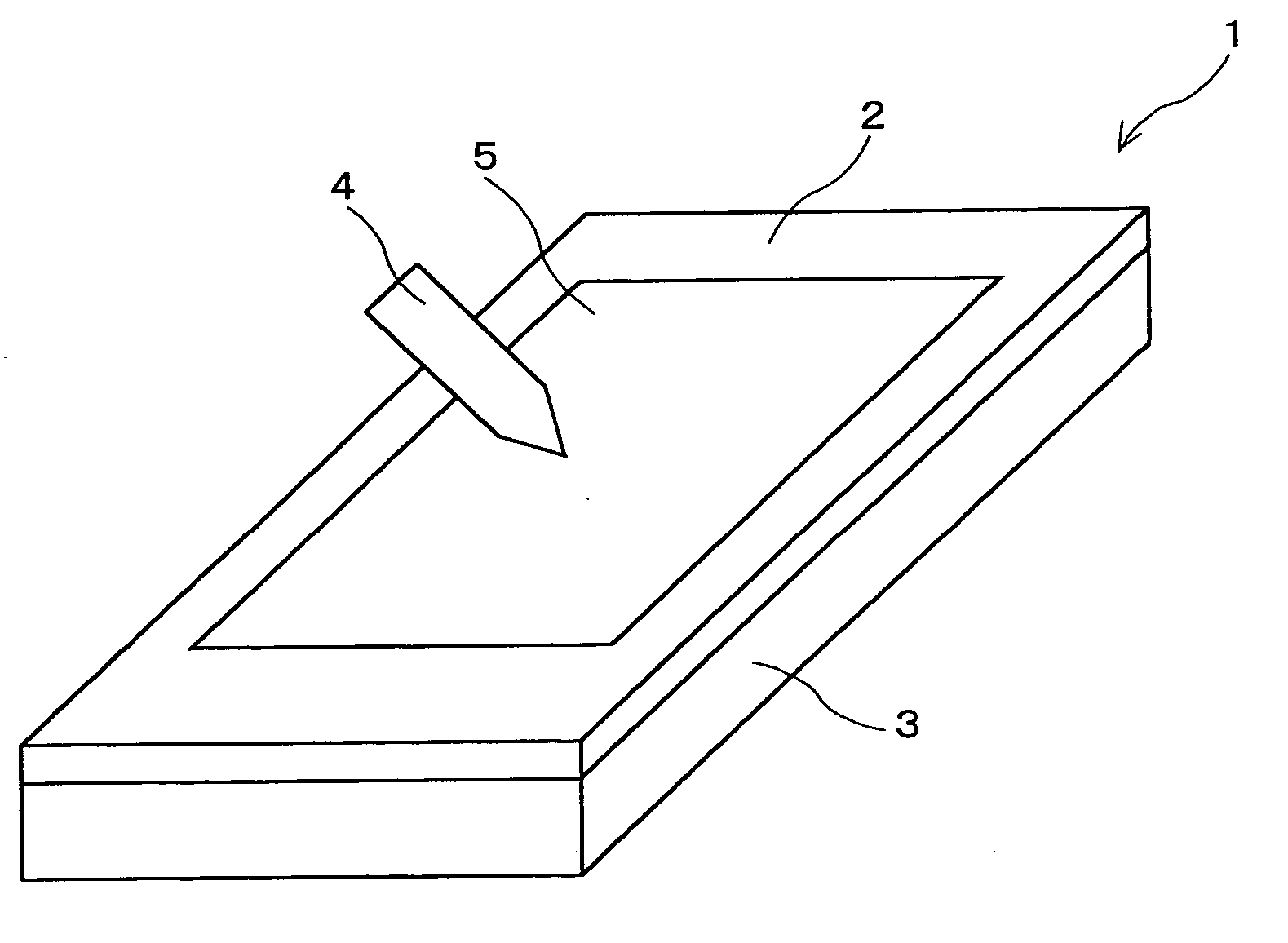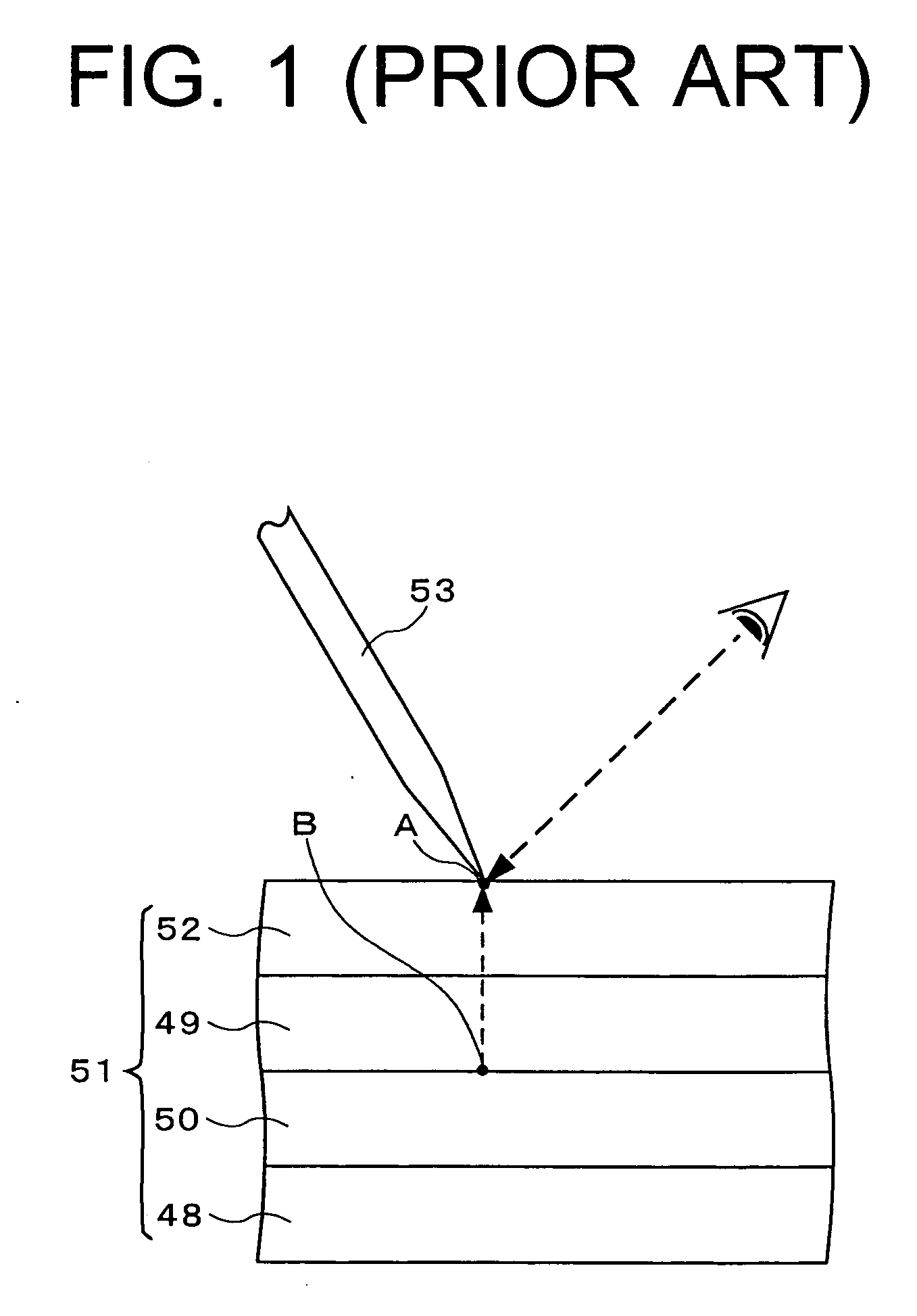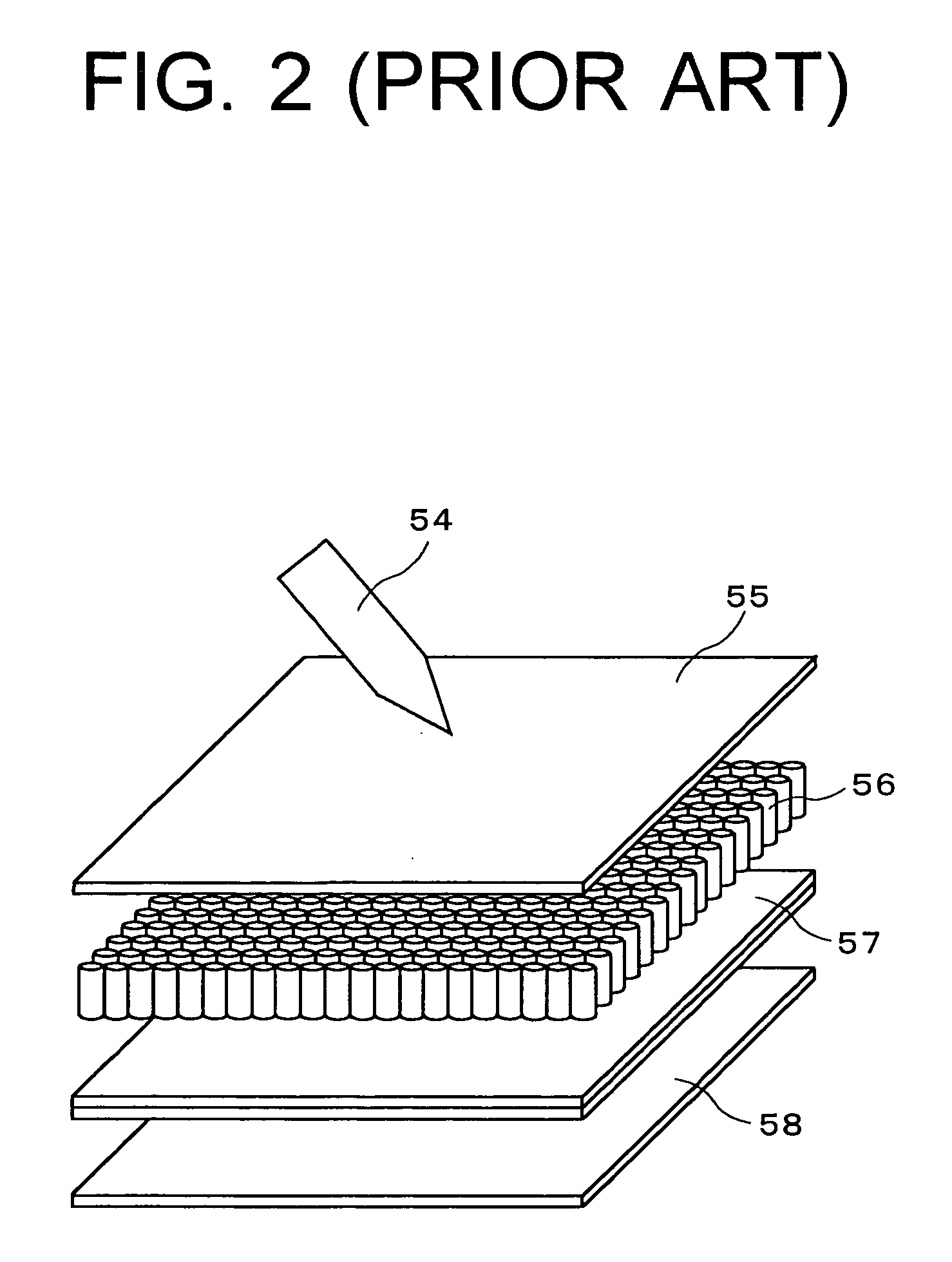Input and output device and terminal device
a terminal device and input and output technology, applied in the direction of instruments, computing, electric digital data processing, etc., can solve the problems of inability to obtain sensing like drawing characters and figures with a pen, low display quality, and low image depth, so as to reduce the depth of image feel, low cost, and high display quality
- Summary
- Abstract
- Description
- Claims
- Application Information
AI Technical Summary
Benefits of technology
Problems solved by technology
Method used
Image
Examples
first embodiment
[0038] Hereinafter, embodiments of the present invention are described in detail with reference to the accompanying drawings. First, the invention is described. FIG. 5 is a perspective view showing an input and output device of this embodiment, FIG. 6 is a partial sectional view of the identical, and FIG. 7 is a diagram showing the optical construction thereof. The input and output device of this embodiment is an input and output device mounted in a PDA.
[0039] As shown in FIG. 5, in the input and output device 1 of this embodiment, a liquid crystal display unit 3 as an output unit is provided, and a tablet 2 as an input unit is provided in front of this liquid crystal display unit 3. In front of the tablet 2, an input / output region 5 is provided. In response to pressing of the input / output region 5 with a pen 4 as an input means by a user, data is inputted into the tablet 2. The entirety of the tablet 2 transmits light, and the user can view an image displayed by the liquid crystal ...
second embodiment
[0061] From the formula 5, in this embodiment, a pair of pixels disposed at a distance three times the aligning pitch P of the pixels from each other are made to display an image for the right eye and an image for the left eye corresponding to each other, whereby a user can be made to recognize a virtual display surface almost on the surface of the input and output device, that is, the front face of the tablet 2, and the depth feel can be almost completely eliminated. This means that, as shown in FIG. 9, the pixels 16 and 18 disposed by sandwiching two pixels therebetween are made to display an image for the right eye and an image for the left eye corresponding to each other. Other workings and effects of this embodiment are the identical as those of the
[0062] Next, a fourth embodiment of the invention is described. FIG. 13 shows an optical construction of an input and output device of this embodiment. This embodiment is different from the third embodiment in that a pair of pixels a...
third embodiment
[0063] As shown in FIG. 13, the distance between the eyes of a user is set to 65 mm, the distance L3 between the right eye 13 and left eye 14 and the surface of the input and output device 1 is set to 400 mm. In addition, as described above, the distance T3 from the interface between the liquid crystal layer 12 and the color filter substrate 6 to the front face of the tablet 2 is set to 0.7 mm. Furthermore, the intersection of light rays transmitted through a pair of pixels adjacent to each other, for example, the pixels 16 and 19 shown in FIG. 13 is defined as a point H, the distance from the interface between the liquid crystal layer 12 and the color filter substrate 6 to the intersection H is defined as T4, and the distance from the intersection H to the right eye 13 and left eye 14 of the user is defined as L4. Furthermore, as in the case of the third embodiment, the aligning pitch of the picture elements 41 (see FIG. 12) is 177 micrometers, and the aligning pitch P of pixels is...
PUM
 Login to View More
Login to View More Abstract
Description
Claims
Application Information
 Login to View More
Login to View More - R&D
- Intellectual Property
- Life Sciences
- Materials
- Tech Scout
- Unparalleled Data Quality
- Higher Quality Content
- 60% Fewer Hallucinations
Browse by: Latest US Patents, China's latest patents, Technical Efficacy Thesaurus, Application Domain, Technology Topic, Popular Technical Reports.
© 2025 PatSnap. All rights reserved.Legal|Privacy policy|Modern Slavery Act Transparency Statement|Sitemap|About US| Contact US: help@patsnap.com



